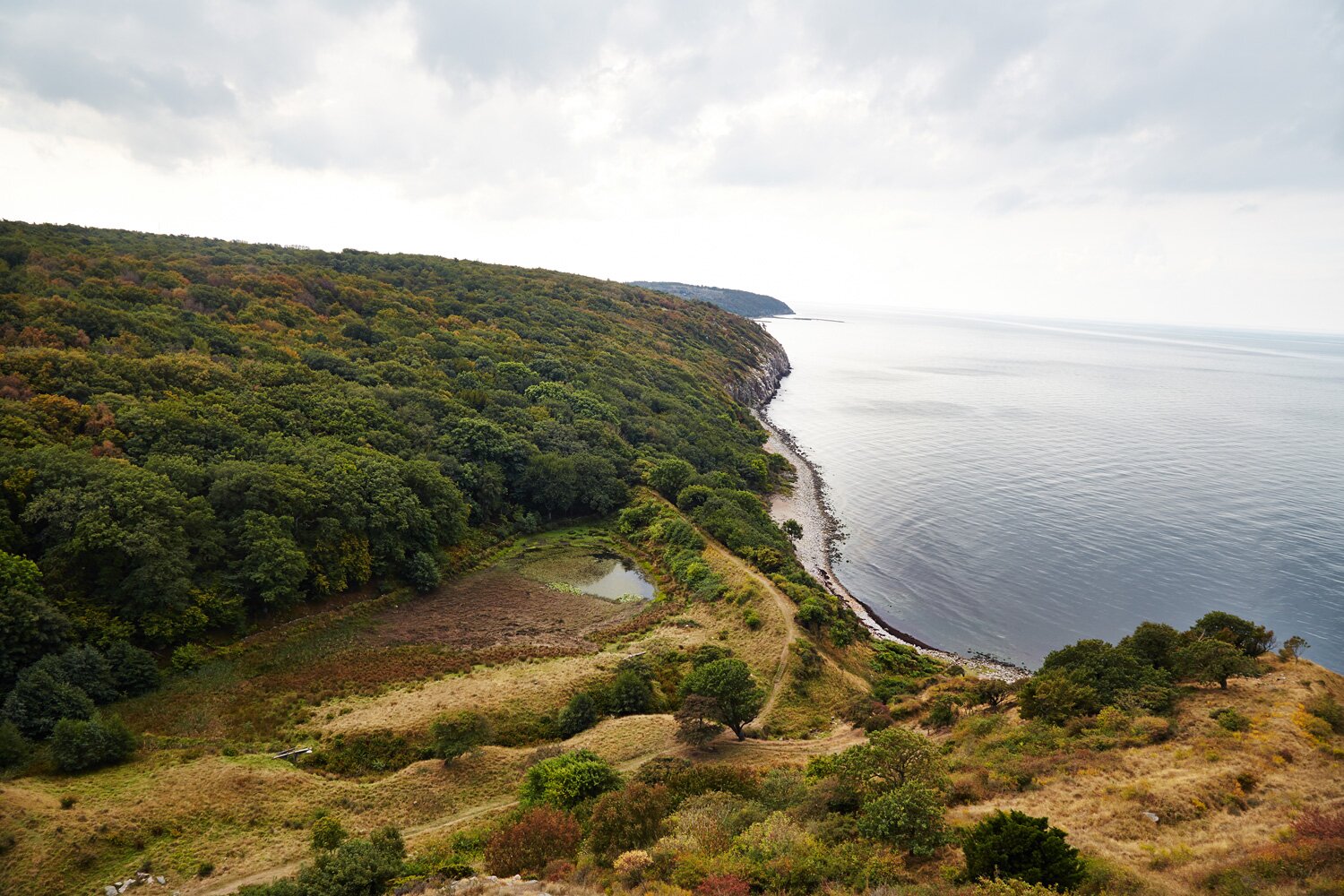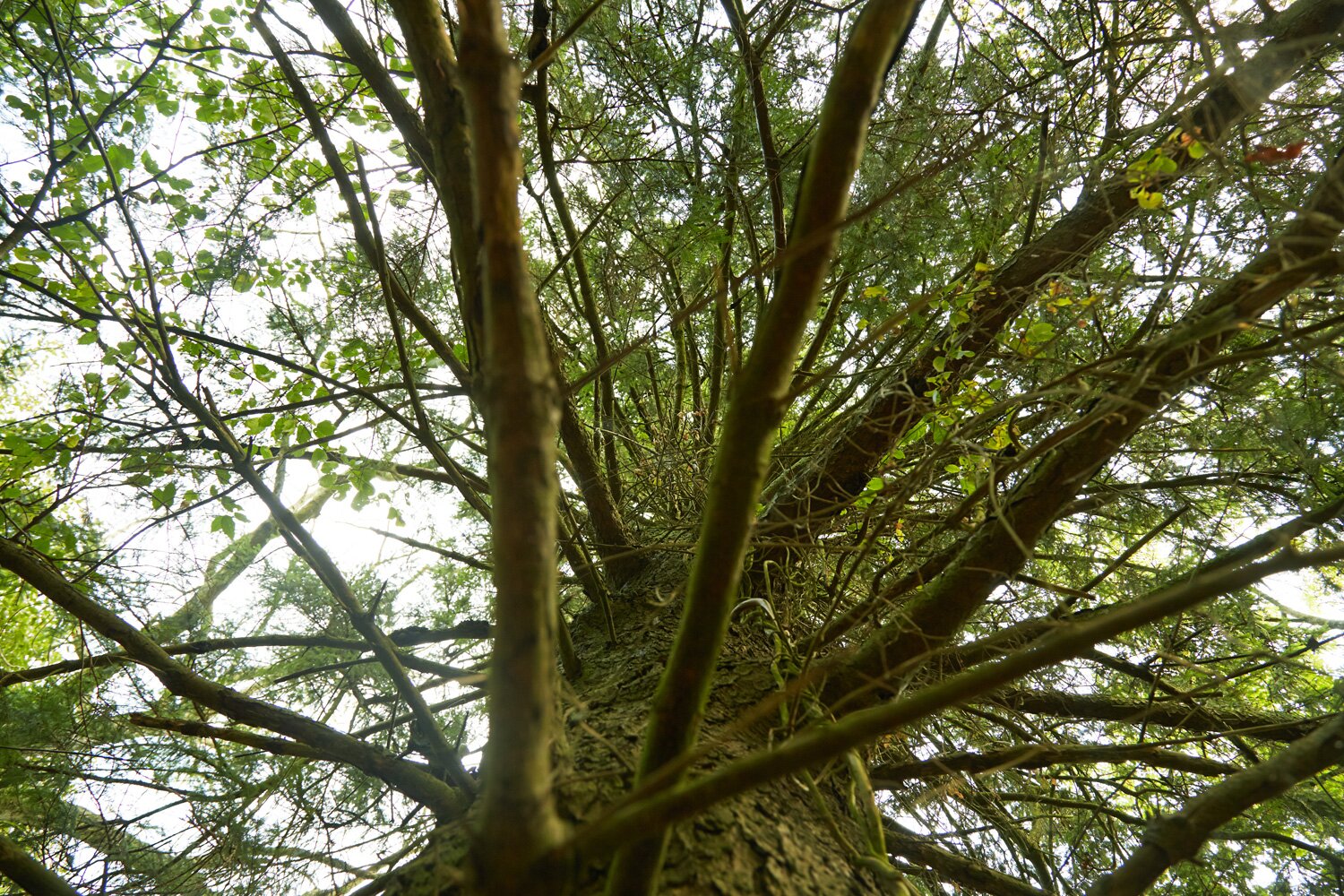How was the water, boys?
It is a deep blue Scandinavian afternoon with an orange sun rapidly descending in the sky. Nicolai Nørregaard stands outside restaurant Kadeau, litterally in the middle of nowhere. Or, rather, just outside the village of Pedersker on the southern coast of Bornholm, with a superb view of the ocean, bright yellow sand dunes, and a few wild rosehip bushes. The 34 year old chef takes an interest in his staff as they walk by in a single file. Today’s staff consists primarily of four guys in their twenties, wearing nothing but swim trunks and beach towels, all shivering after a dip in the Baltic Sea. No mean feat in late September; this is, after all, north of the 55th parallel.
”I’ll tell you how the water was,” says one. ”3 cm! You hear me? That’s how cold it was.”
Nicolai Nørregaard flashes a white set of teeth and shakes his head.
”Nah, actually, I’d say it was about 5 cm,” the next guy in line comments.
”12 cm,” the third one then says with a deadpan expression.
The words linger in the air.
”Really?” says the last member of the swimming staff in outright disbelief, as the whole group – chef Nicolai Nørregaard included – crack up.
It’s business as usual on the isle of Bornholm and in particular on the premises of Kadeau. The restaurant – rewarded in March 2013 with a Michelin star – has made a name for itself in Denmark in recent years with a cuisine that is as refined and ”New Nordic” as you would have it in Noma, the restaurant three times garlanded the world’s best by Restaurant Magazine. Kadeau, however, is the more accessible option, both in terms of price and getting a table. And while René Redzepi’s acclaimed restaurant in Copenhagen has made its reputation from foraging the Nordic region for ingredients, the boys behind Kadeau limit their sourcing to the isle of Bornholm, known for its rugged nature, sunny climate, and abundant seafood.
Three young locals, Nicolai Nørregaard, Rasmus Kofoed, and Magnus Høegh Kofoed, are partners in crime in this unlikely business endeavour – people in the Danish restaurant business affectionately refer to them as ’the Kadeau Boys’. In fact, since they opened the restaurant in 2007, they have had so much success, they’ve expanded with a Copenhagen branch and a more low key-eatery, called Pony.
In short, Kadeau Bornholm is gourmet without the white tablecloth. The casual air and dry wit continues on the plate. This season’s signature dish is dubbed Chicken Feet and Carrots – inspired by a Danish folk song, Hønsefødder og gulerødder. It consists of just that, a huge pair of carefully roasted free range chicken drumsticks, including the feet, making it both very rustic, deliciously nasty – yes, you are indeed eating a dead animal here – as well as quite hilarious, as the chicken is served in a wooden box containing fresh hay. It’s the kind of dish that puts a goofy smile on most people’s faces and strikes terror in others. Eating it, however, poses no mayor hiccups:
”We recommend you eat the little fella with your hands,” as co-owner Magnus Høegh Kofoed puts it.
But if eating Kadeau’s dishes is rather straightforward, preparing them is not. Their speciality is a kind of cuisine that is all about intense flavours from seasons past, from a time when refrigerators simply weren’t there, and people preserved food using traditional methods. Meaning these folk will pickle, ferment, salt, or smoke any plant, vegetable, or herb you put in front of them. During the summer season, this means foraging up to two ton of produce.
As one local says, ”In the summer, if you spot three asses sticking up over the tall grass in the middle of the woods, foraging like squirrels, it’s bound to be the Kadeau boys.”



